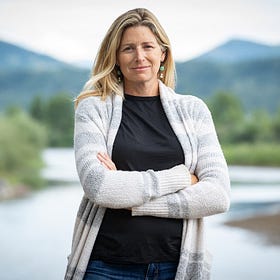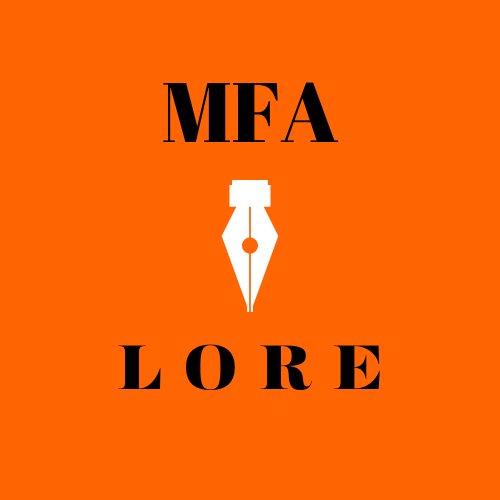“It didn't really land inside that people like me could publish books. And when one of my best friends did it, I was like, she did it! I could do it. And that's when the seed was planted. I'm doing it, I'm writing this book!”
Thank you
, , and many others for tuning into my live video with , author of the electrifying new memoir The River’s Daughter!"The River's Daughter" is Bridget’s coming-of-age story of growing up on the Snake River in Jackson, Wyoming, becoming an international whitewater rafting guide, and breaking generational cycles of poverty and abuse through new perspective gained by navigating powerful rivers.
What a delight it was to speak with Bridget about her long, hard, and ultimately spectacular journey to publication of this debut memoir! We covered a vast amount of ground and a wealth of publishing insider intel in our hour together. You can listen to it all here or read the transcript using the link above.
Here are just a few of the major takeaways.
Key Publishing Insights
The Power of a Strong Elevator Pitch: Bridget emphasizes how crucial it was to develop a tight, compelling elevator pitch for her memoir "The River's Daughter." Her pitch positioned it as "a coming of age literary memoir" about growing up on Wyoming's Snake River, escaping a troubled childhood through river guiding, working internationally on the Zambezi, and ultimately breaking generational cycles of poverty and abuse.
Strategic Market Research: Bridget did extensive research by visiting bookstores, imagining where her book would sit on shelves, and studying comparable titles. She researched agents and publishers who worked with books like "The Glass Castle," "The Liars' Club," and "Don't Let's Go to the Dogs Tonight" to target the right industry professionals.
Genre Positioning Matters: Rather than marketing her book as adventure memoir (alongside authors like Tim Cahill or Anthony Bourdain), Bridget strategically positioned it as literary memoir with crossover appeal, landing in the wheelhouse of acclaimed family memoirs.
Writing Process Evolution
From Poetry to Prose: The memoir began as a collection of poems that helped Bridget process difficult emotional scenes she couldn't yet write in prose. These poems gradually "grew connective tissue" and expanded into full chapters.
The Inspiration Moment: At age 30, seeing a friend's book prominently displayed in Barnes & Noble was Bridget's pivotal moment - she "fell to her knees crying" realizing that "people like me could publish books."
The Long Journey: Bridget worked on her manuscript for 22 years while raising two children, going through 8-9 drafts and working with three different writers' groups. This demonstrates that memoir writing is often a marathon, not a sprint.
The Role of Therapy in Memoir Writing
Emotional Distance is Essential: Bridget credits extensive therapy with enabling her to write about trauma without it being "me vomiting my sad story onto the page." Therapy removed the "charge" from difficult scenes, allowing her to craft them literarily rather than emotionally.
Purpose Over Revenge: The therapeutic work helped her focus on breaking generational cycles rather than blame or revenge, making the memoir a tool for helping others rather than settling scores.
Critical Feedback and Revision
Early Rejection as Teaching Tool: At draft four, Bridget received valuable feedback from a top literary agent (Toni Morrison and Mary Karr's agent) who had four readers review the manuscript. Though they passed, their "brutal but honest" notes revealed crucial weaknesses in the manuscript.
The "Tone Issue" Problem: The main criticism was how Bridget portrayed herself as a character - she was being too self-deprecating rather than presenting herself as a hero readers could root for. This reflects societal conditioning, especially for women, to downplay achievements rather than embrace the protagonist role.
Reframing Self-Portrayal: Bridget learned that memoir protagonists need to be heroes worthy of the reader's investment. If the author doesn't believe in and champion their own character, readers won't either.
When to Know a Manuscript is Ready
The Impossible Decision: Determining readiness is "agonizing" - even after 8 drafts, Bridget still wasn't certain her manuscript was ready and admits she still doesn't think it's perfect.
Perfectionism vs. Progress: The key lesson is that manuscripts will never be perfect. At some point, authors must stop being "precious" about their work and accept that there will always be something that could be improved.
Rejection as Guidance, Not Failure: Rather than viewing early rejections as failures, Bridget learned to see them as part of the journey - each person who provided feedback played their intended role in helping improve the work.
Navigating Industry Pitfalls
Beware of Predatory Services: Bridget was scammed by a developmental editor who kept her money for six months without providing any work. This happened because she was naive about the industry and trusted a "highly regarded" person's recommendation, who likely received kickbacks.
Trust Your Writing Community: After the scam, Bridget relied on her local writers' groups rather than expensive outside services. This proved more valuable and trustworthy than paid professional editing services.
The Evolution of Writers' Groups: Bridget worked with three different groups over 22 years, each serving a different purpose:
First group ("Carpet Sniffers"): Emotional support for processing difficult material
Second group: Magazine/travel writers who elevated craft and structure
Third group (Malibu Writers Circle): Professional published authors who provided brutal but necessary feedback on authenticity and craft
Advanced Craft Techniques
Separating Author from Character: Bridget learned to remove "Bridget the person this happened to" from the revision process and treat the protagonist as a separate character whose arc needed to be crafted intentionally.
Managing Emotional Overwhelm During Critique: When receiving feedback on traumatic material, Bridget would record critique sessions and listen to them later in casual settings (like driving kids to activities) to process suggestions without emotional interference.
Character Arc as Thematic Thread: The memoir follows the same power dynamic conflicts across different settings (family, rivers, Zambia) showing how the protagonist learns to respond differently to domination and eventually develops healthy boundary-setting skills.
Universal Themes Through Personal Story: Rather than just a personal narrative, Bridget crafted her story to explore broader themes of colonialism, sexism, racism, and family dysfunction - all centered around power dynamics and how people break free from cycles of domination.
In the end, successful publication requires not only compelling content and strategic positioning, but also community support, resilience through industry pitfalls, emotional processing, and the ability to craft personal experience into universal themes that resonate with readers. Bridget Crocker leads the way!
Want more?
This Live conversation for Well Published! is Part 2 of my interview with Bridget. ICYMI, you can read Part 1, in which Bridget talks about her personal story and the crafting of this beautiful book here:
On Writing 'The River's Daughter'
I had to do the emotional recovery work to be able to access forgiveness and develop empathy and then go back and infuse that into the writing.
Join our next live video in the app.
Authors Unfiltered: On Agents! LIVE with , , and - Friday, June 20 @ 12pmPT / 3pmET
Would you like an MFA-level response to your work?
Becoming a Premium Member of the MFA Lore community will entitle you to Aimee’s written feedback on your query and up to 5 pages (1250 words) of your creative work. Your “Take 5 Packet Letter” will highlight both the Strengths and the Opportunities in your work, helping you determine whether it’s time to “press send” to agents or reorient your revision. Price will go up next month, so subscribe or upgrade to become a Premium Member today!













Share this post